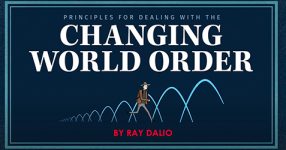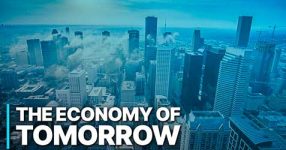In 2008, the world witnessed a seismic financial shift, triggering a chain reaction that continues to reverberate through the global economy over a decade later. Governments implemented bailouts and stimulus packages to counter the fallout, yet the question persists: was the crash merely a symptom of a more profound, systemic issue?
The Role of the United States in the Global Financial Landscape
As a pivotal player in global politics and economics, the United States has wielded significant influence over the world’s financial system. However, a concerning pattern has emerged, one that could potentially undermine the very structures it helped shape. The sustainability of the status quo hinges on the government’s ability to uphold the faith it initially garnered. As time progresses, this certainty becomes increasingly uncertain.
From Gold Standard to Fiat Currency: Unraveling the Threads of Financial Evolution
The trajectory of the global economy took a critical turn in 1971 with the suspension of the gold standard, marking the shift from tangible value to fiat currency. Understanding the distinction between money and currency is paramount. How does it impact the average person, and why is it essential to comprehend before delving into the reasons why money is no longer “as good as gold”?
The Ongoing Debate: Financial System or Giant Ponzi Scheme?
Some argue that the financial system operates as a colossal Ponzi scheme, yet for many, as long as everyday needs are met, the concern seems negligible. Is the system caught in an endless loop that perpetuates itself, and to what extent does debt inflation contribute? Can the government genuinely control the effects, and what measures are they willing to take to maintain that control?
“End of the Road: How Money Became Worthless” – Navigating the Financial Landscape
Directed by Tim Delmastro, the documentary delves into the aftermath of the 2008 financial crisis. With Wall Street occupied and Europe in turmoil, the film questions whether the crisis was truly resolved or if the problems were merely deferred. In a captivating and easily digestible style, the documentary unfolds the story of the world’s financial state, from post-WW2 seeds to the current challenges, and speculates on the potential future awaiting us.
Exploring the Global Financial Collapse: A 56-Minute Revelation
The documentary scrutinizes the 2008 financial crisis and its aftermath, challenging the notion that the underlying issues were adequately addressed. It shines a light on the concept of fiat currency, its dependence on confidence, and the potential ramifications of its failure. Through the lens of diverse individuals and communities worldwide, from an average American family to an Amazon tribe, the film envisions how they might navigate a scenario where money loses its value.
Key Takeaways from “End of the Road”
- Deeper Systemic Issues: The film argues that the 2008 financial crisis was not an isolated incident but a symptom of deeper problems within the global monetary system.
- Evolution of Currency: Delving into the history of fiat currencies, the documentary emphasizes the shift from gold-backed systems to the current framework based on government debt and central bank guarantees.
- Diverse Perspectives: Featuring interviews with economists, financial experts, and ordinary citizens, the documentary offers a mosaic of perspectives on the current economic situation and potential future scenarios.
- Navigating Uncertainty: The film explores various scenarios for the global economy, contemplating a hyperinflationary collapse or a transition to a more resilient system.
Unraveling the Threads of the Global Economic Tapestry
In conclusion, “End of the Road: How Money Became Worthless” is not just a documentary; it’s a critical exploration of our economic foundations. From the history of currency to the role of trust, the film invites viewers to question the trajectory of the global economy and its impact on everyday lives. As we navigate an uncertain financial landscape, understanding these complexities becomes not just an option but a necessity for shaping our financial destinies.












